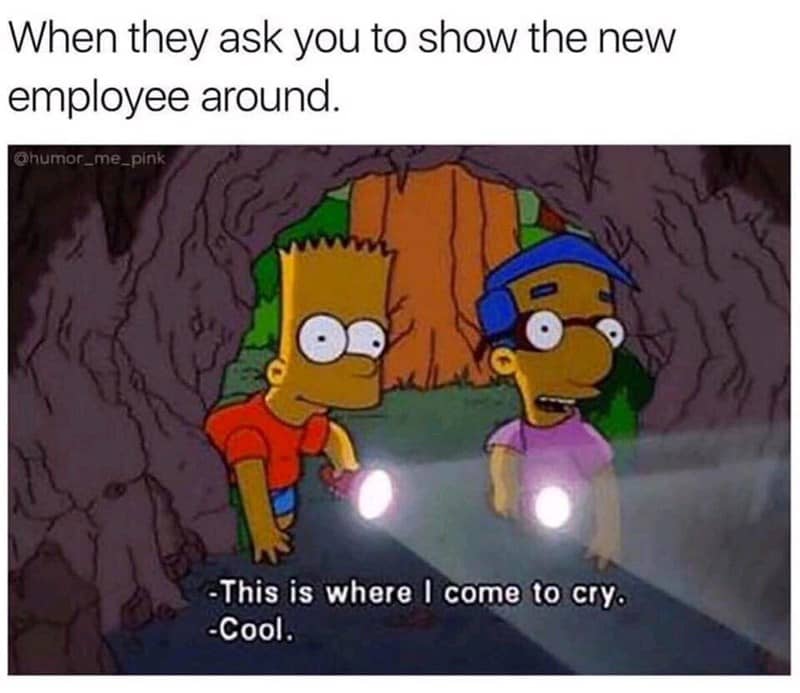12 Stages of Burnout and What to Do About Each
Burnout is a progressive condition that results from chronic workplace stress and can lead to mental, emotional, and physical exhaustion.
The 12 stages of burnout, developed by psychologists Herbert Freudenberger and Gail North, provide a detailed framework for understanding how burnout develops over time.

Below is an overview of each stage, but also an example of each to illustrate what that stage looks like so you can better understand if it applies to you.
1. The Compulsion to Prove Oneself
In the initial stage, the person feels a strong need to demonstrate their worth and capabilities.
This often manifests as excessive ambition and a drive to take on more responsibilities and prove their competence.
Example of Stage 1: A new marketing executive volunteers for every project and consistently works late to impress her superiors.
Are you a mom experiencing burnout looking for recovery? Check out my article, How to Explain Mom Burnout to Your Husband – With Script
2. Working Harder
As the compulsion to prove oneself grows, the person begins to work increasingly harder.
This stage is characterized by an inability to disconnect from work, leading to long hours and work taking up personal time.
Example of Stage 2: An IT specialist starts skipping lunch breaks and working weekends to keep up with his increasing workload
3. Neglecting Needs

In this stage, personal needs such as sleep, nutrition, and social interactions are neglected.
The focus on work becomes so intense that self-care and personal well-being are disregarded.
Example of Stage 3: A startup founder regularly sacrifices sleep and skips meals to dedicate more time to her business
4. Displacement of Conflicts
The person begins to dismiss and avoid conflicts and problems.
They may feel overwhelmed but choose to ignore these feelings, leading to unresolved issues that increase stress.
Example of Stage 4: A sales manager ignores growing tensions with his wife, convincing himself that hitting career targets is more important than addressing interpersonal issues
5. Revision of Values
At this stage, values become skewed. Work takes precedence over personal life, and hobbies, family, and friends are seen as less important.
This shift in priorities can lead to isolation and a loss of personal identity.
Example of Stage 5: A lawyer, once passionate about her hobbies, now views them as a waste of time and dedicates all her energy to her legal career
6. Denial of Emerging Problems

The person starts to deny that they are experiencing problems.
They may become intolerant, cynical, and aggressive, often blaming others for their stress.
Social interactions become strained, and there is a refusal to acknowledge the need for help.
Example of Stage 6: A teacher, dismisses concerns from colleagues about his increasing irritability, blaming it on “difficult students.”
Looking for help with your burnout? Send your friends or family some strategies from my article How to Help Someone with Burnout
7. Withdrawal
Social withdrawal becomes pronounced.
The person may avoid social interactions and activities they previously enjoyed.
This withdrawal can lead to feelings of loneliness and exacerbate the burnout process.
Example of Stage 7: A teacher, previously social and outgoing, starts declining invitations and isolating herself from friends and family
8. Odd Behavioral Changes
Behavioral changes become noticeable to others.
These can include increased irritability, impatience, and aggression. Friends and family may express concern over these changes.
Example of Stage 8: Tom’s wife notices he’s become unusually short-tempered and impatient, even with their children
Get burnout from a professional mental health clinic like Manhattan mhc therapy.
9. Depersonalization
A sense of detachment and depersonalization sets in.
The person may no longer see themselves or others as valuable.
They feel disconnected from their own needs and emotions.
Example of Stage 9: A nurse starts viewing patients as “cases” rather than individuals, losing her empathy and compassion
10. Inner Emptiness
Feelings of inner emptiness and void become prevalent.
To cope, the person may turn to excessive activities such as overeating, substance abuse, or other risky behaviors.
Example of Stage 10: Alex, once passionate about his work in finance, now feels a constant void and turns to excessive drinking to cope
11. Depression
Depression marks a severe stage of burnout. Ther person feels lost, exhausted, and hopeless.
Life appears bleak, and they may struggle to find meaning or purpose in their work and personal life.
Example of Stage 11: A successful entrepreneur finds herself unable to get out of bed some days, feeling hopeless about her future
12. Full Burnout Syndrome

The final stage is characterized by a total mental and physical collapse. At this point, professional medical intervention is often necessary.
The person may need to take extended leave from work to recover.
Example of Stage 12: A high-performing executive, suffers a complete mental and physical breakdown, requiring hospitalization and extended leave from work.


